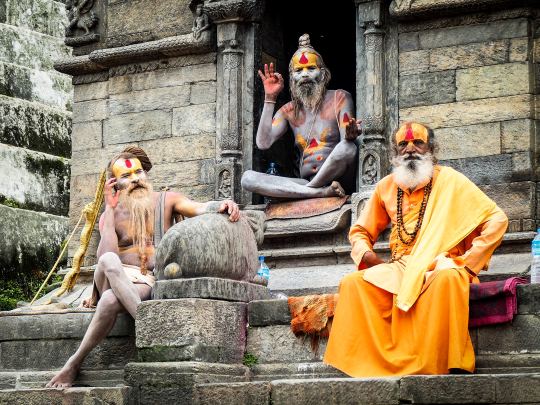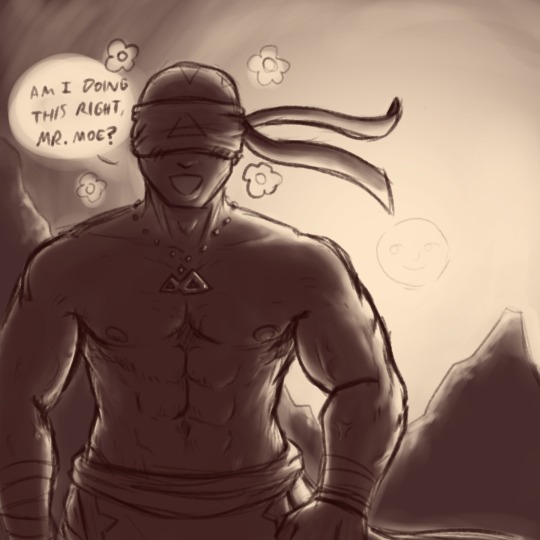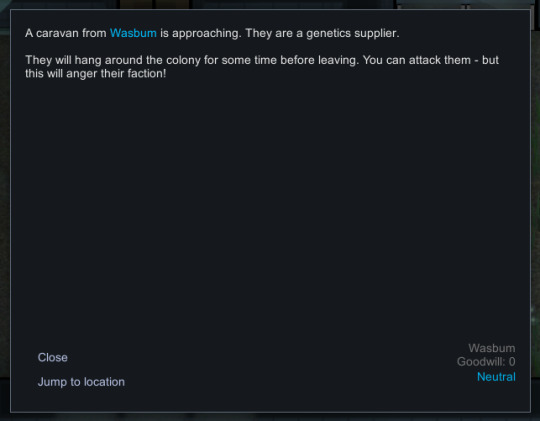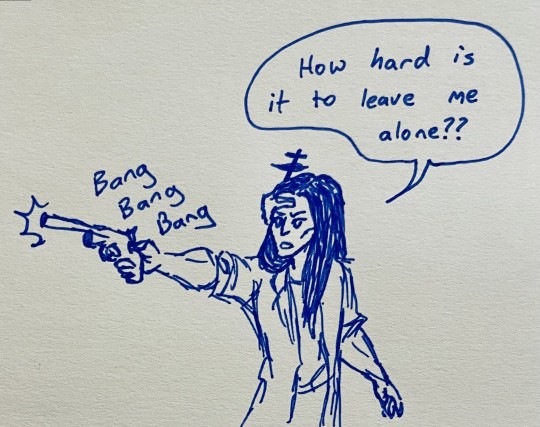#ascetics
Explore tagged Tumblr posts
Text



[(whistles) (whistles) THOUGH REDUCE US TO THE STATUS OF ASCETICS FILLING UP ON GANGSTER TOFU BURGERS...]
#s15e02 goin' the extra mile#guy fieri#guyfieri#diners drive-ins and dives#whistles#though#the#ascetics#gangster#burgers
32 notes
·
View notes
Photo

Sadhu Babas in Pashupatinath are ascetics who live a simple and spiritual life in the temple complex. Their unique appearance and spiritual practices attract visitors seeking their blessings and guidance.
#sadhubaba#pashupatinath#ascetics#spirituallife#blessings#guidance#hindusim#visitnepal#explorenepal#discovernepal#marveltreks.com#hiddengems#peacefullife#medition#religious#temple#positiviy
2 notes
·
View notes
Text
As the curtains open, I came with my own roses. As the curtains close, I leave with yours
#Spotify#GotYoinkd#yoink#music#edm#lofi#ascetics#rose#roses#streetclassics#heart and soul#rip#rip homie#alt model#amberleerose#glitz#glitch
2 notes
·
View notes
Text
Tales of Ascetics in the Rig Veda: Wisdom and Enlightenment
The Rig Veda, humanity’s oldest text, is a true source of inspiration for understanding the spiritual and philosophical practices of the civilization of the 7 rivers. Among its many hymns, several evoke the life of ascetics, wise men who chose to detach themselves from material pleasures to explore the mysteries of the mind and the universe. These stories, rich in symbolism, reflect a profound…
#ascetics#civilization of the 7 rivers#enlightenment#rig veda#spiritual awakening#spiritual quest#Vedic hymns#Vedic practices#wisdom
0 notes
Text

A photographer snaps pictures of new monks on January 30, 2013 on the bank of the Ganges River in Allahabad. Sanjay Kanojia, AFP/Getty Images
0 notes
Text
Navigating the River of Enlightenment: A Journey through Herman Hesse's "Siddhartha: An Indian Tale"

Herman Hesse's "Siddhartha: An Indian Tale" unfolds as a spiritual voyage, a philosophical exploration that transcends time and resonates with seekers across cultures and generations. Originally published in 1922, this timeless novel follows the transformative journey of Siddhartha, a young man in ancient India, as he seeks meaning and enlightenment. The narrative unfolds against the backdrop of the historical Buddha's teachings, yet it remains a deeply personal and introspective account.
The story commences with Siddhartha, the son of a Brahmin, embarking on a quest for spiritual understanding. He rejects the traditional path set by his father and decides to explore life's meaning through personal experience. The novella is divided into parts, each encapsulating a phase in Siddhartha's odyssey—his time among ascetics, encounters with the material world, and eventual union with the river.
At its core, "Siddhartha" is a tale of self-discovery, self-realization, and the pursuit of enlightenment. Hesse weaves a narrative that explores the complexities of existence and the interconnectedness of life. Siddhartha's interactions with various characters, including his friend Govinda, the ascetic Samanas, and the courtesan Kamala, contribute to the novel's rich tapestry of wisdom and introspection.
One of the novella's notable strengths lies in its universal themes. Hesse's prose, translated elegantly into English, possesses a timeless quality that transcends cultural and temporal boundaries. Siddhartha's quest for meaning becomes a mirror through which readers can reflect on their own spiritual journeys, regardless of their background or beliefs.
The river, a central motif in the narrative, symbolizes the cyclical nature of life and the constant flow of time. Siddhartha's repeated visits to the river serve as a poignant metaphor for the human experience—ever-changing, yet eternally connected to a greater cosmic rhythm. The river becomes a silent witness to Siddhartha's evolution, mirroring the transformative power of introspection and the acceptance of life's impermanence.
Hesse's exploration of Eastern philosophy and spirituality is a hallmark of "Siddhartha." The novella introduces readers to concepts such as the interconnectedness of all life (samsara), the path to enlightenment (Nirvana), and the importance of finding one's own path (Dharma). Hesse deftly incorporates these principles into the narrative, providing readers with a window into the profundity of Eastern thought.
"Siddhartha" is a work that invites readers to engage in contemplation and self-reflection. Hesse's narrative style, characterized by its simplicity and clarity, allows readers to delve into profound philosophical ideas without feeling overwhelmed. The novella stands as a testament to the power of literature to inspire personal and spiritual growth.
In conclusion, "Siddhartha: An Indian Tale" is a timeless masterpiece that transcends cultural and philosophical boundaries. Herman Hesse's narrative, rich with wisdom and insight, invites readers on a journey of self-discovery alongside Siddhartha. The novel's enduring relevance lies in its ability to illuminate the universal quest for meaning and enlightenment, making it a must-read for those seeking contemplative literature that resonates across the ages.
Herman Hesse's "Siddhartha: An Indian Tale" is available in Amazon in paperback 10.99$ and hardcover 18.99$ editions.
Number of pages: 156
Language: English
Rating: 10/10
Link of the book!
Review By: King's Cat
#Herman Hesse#Siddhartha#Indian Tale#Spiritual journey#Enlightenment#Self-discovery#Ancient India#Brahmin#Ascetics#Govinda#Material world#River#Wisdom#Philosophy#Universal themes#Timeless#Cyclical nature#Cosmic rhythm#Impermanence#Eastern philosophy#Samsara#Nirvana#Dharma#Contemplation#Self-reflection#Prose#Translation#Simplicity#Clarity#Profound ideas
1 note
·
View note
Text
Navigating the River of Enlightenment: A Journey through Herman Hesse's "Siddhartha: An Indian Tale"

Herman Hesse's "Siddhartha: An Indian Tale" unfolds as a spiritual voyage, a philosophical exploration that transcends time and resonates with seekers across cultures and generations. Originally published in 1922, this timeless novel follows the transformative journey of Siddhartha, a young man in ancient India, as he seeks meaning and enlightenment. The narrative unfolds against the backdrop of the historical Buddha's teachings, yet it remains a deeply personal and introspective account.
The story commences with Siddhartha, the son of a Brahmin, embarking on a quest for spiritual understanding. He rejects the traditional path set by his father and decides to explore life's meaning through personal experience. The novella is divided into parts, each encapsulating a phase in Siddhartha's odyssey—his time among ascetics, encounters with the material world, and eventual union with the river.
At its core, "Siddhartha" is a tale of self-discovery, self-realization, and the pursuit of enlightenment. Hesse weaves a narrative that explores the complexities of existence and the interconnectedness of life. Siddhartha's interactions with various characters, including his friend Govinda, the ascetic Samanas, and the courtesan Kamala, contribute to the novel's rich tapestry of wisdom and introspection.
One of the novella's notable strengths lies in its universal themes. Hesse's prose, translated elegantly into English, possesses a timeless quality that transcends cultural and temporal boundaries. Siddhartha's quest for meaning becomes a mirror through which readers can reflect on their own spiritual journeys, regardless of their background or beliefs.
The river, a central motif in the narrative, symbolizes the cyclical nature of life and the constant flow of time. Siddhartha's repeated visits to the river serve as a poignant metaphor for the human experience—ever-changing, yet eternally connected to a greater cosmic rhythm. The river becomes a silent witness to Siddhartha's evolution, mirroring the transformative power of introspection and the acceptance of life's impermanence.
Hesse's exploration of Eastern philosophy and spirituality is a hallmark of "Siddhartha." The novella introduces readers to concepts such as the interconnectedness of all life (samsara), the path to enlightenment (Nirvana), and the importance of finding one's own path (Dharma). Hesse deftly incorporates these principles into the narrative, providing readers with a window into the profundity of Eastern thought.
"Siddhartha" is a work that invites readers to engage in contemplation and self-reflection. Hesse's narrative style, characterized by its simplicity and clarity, allows readers to delve into profound philosophical ideas without feeling overwhelmed. The novella stands as a testament to the power of literature to inspire personal and spiritual growth.
In conclusion, "Siddhartha: An Indian Tale" is a timeless masterpiece that transcends cultural and philosophical boundaries. Herman Hesse's narrative, rich with wisdom and insight, invites readers on a journey of self-discovery alongside Siddhartha. The novel's enduring relevance lies in its ability to illuminate the universal quest for meaning and enlightenment, making it a must-read for those seeking contemplative literature that resonates across the ages.
Herman Hesse's "Siddhartha: An Indian Tale" is available in Amazon in paperback 10.99$ and hardcover 18.99$ editions.
Number of pages: 156
Language: English
Rating: 10/10
Link of the book!
Review By: King's Cat
#Herman Hesse#Siddhartha#Indian Tale#Spiritual journey#Enlightenment#Self-discovery#Ancient India#Brahmin#Ascetics#Govinda#Material world#River#Wisdom#Philosophy#Universal themes#Timeless#Cyclical nature#Cosmic rhythm#Impermanence#Eastern philosophy#Samsara#Nirvana#Dharma#Contemplation#Self-reflection#Prose#Translation#Simplicity#Clarity#Profound ideas
1 note
·
View note
Text
Unseen Warfare
IS PRAYING 15 MINUTES TOO LONG FOR YOU?
The term stylite derives from the Greek “stylos,” meaning pillar. It refers to ascetic Christian monks who decided to live on top of a pillar (or a column, or its equivalent) for extended periods of time – seeking solitude and silence, but also as a form of penance. This unique (and rather rigorous) practice emerged in the early Christian centuries, particularly in the Byzantine Empire. The most famous, and first, of the Stylites was Symeon Stylites (389–459), a Syrian holy man who lived for many years on top of a pillar.
The son of a shepherd, Symeon entered a monastic community but was expelled because of his excessive austerities and became a hermit. His reputed miracle-working generated popular veneration to such a degree that, to escape the importunities of the people, he began his pillar life northwest of Aleppo about 420. His first column was 2 metres (6 feet) high, later extended to about 15 metres (50 feet), and the platform is said to have been about 1 square metre (about 11 square feet). He remained atop the column for 37 years, permanently exposed to the elements, standing or sitting day and night in his restricted area, protected from falling by a railing, and provided with a ladder to communicate with those below or to receive meagre gifts of food from disciples. Visitors sought spiritual counsel, relief from sickness, intervention for the oppressed, and enlightenment in prayer and doctrine. Simeon apparently converted many people, and he influenced the Eastern Roman emperor Leo I to support the orthodox Chalcedonian party during the 5th-century controversy over the nature of Christ. When he died, his body was found by a disciple and was apparently stooped in prayer. His pillar became a pilgrimage site, and Simeon’s reputation inspired ascetics, both men and women, to emulate and surpass his austerities; some stylites appeared as late as the 19th century in Russia. (Britannica)

1 note
·
View note
Text

Night landscapes.
#janasojka#jana sojka#art#artists on tumblr#nature#england#uk#kendal#contemporary#botanical#polish artist#fine art#Orange#Lights#light ascetic#street lights#streetview#street photography#content#conceptual#modern art#artist
562 notes
·
View notes
Note
Absolutely sending me that vasco sleeps butt fucking naked with his weird little Victorian doll boyfriend
Different strokes for different folks.
Vasco finds sleepwear kind of unnecessary and restricting. He doesn't insist on sleeping nude and can go to bed decently dressed if the situation calls for it, but if it's up to him and he's comfortable and in trusted company, he prefers wearing very little.
Machete gets cold easily and has weird body image issues, not being properly covered tends to distress him. Plus he has a thing for high guality garments and wants to look pretty or at least passably presentable even in bed.
#Vasco grew up smothered in luxury so even though he enjoys dressing flashy and taking care of his appearances#he still ends up prioritizing comfort and convenience especially in private#the thought of somehow falling from his high lifestyle scarcely crosses his mind#Machete grew up in ascetic surroundings and wasn't allowed to have nice things until he began earning his own money as an adult#when he eventually started being able to afford silk (the softest fanciest material around but outrageously expensive)#there was no turning back he wants to wear that 24/7#Machete thinks Vasco is hot (easy on the eyes) and hot (warm to the touch) so he may sleep butt fucking naked in his bed all he wants#and Vasco thinks Machete looks cute in his silly frilly nightgowns and he knows he wears them to feel better about himself so why not#everybody wins#answered#anonymous#Vaschete lore
670 notes
·
View notes
Text



Finally got time to post this here lmao
416 notes
·
View notes
Text
i wonder if qimir/the stranger frantically cleaned up the cave once he carried osha home & bandaged her up all nice & tucked her into his shitty little bed
like if the man ever had people over for Sexy Times surely he'd have a real bed, & if he ever had people over for *deep voice* GUYS NIGHT surely he'd have a couch
so if he really is alone all the time it's quite plausible the place was an absolute sty & he frantically hid everything because osha could wake up at any moment & at some point she's gonna go into the Cave Closet & an avalanche of dirty dishes & clothes will smother her
#i do get the sense that he's quite ascetic about stuff#like taking really good care of himself & his space & his weapons/tools#but he is also Just A Man & this headcanon is Very Funny to me#the acolyte#qimir#star wars qimir#oshamir
62 notes
·
View notes
Text


I was fighting BPD.
116 notes
·
View notes
Text


I'm sure it's nothing, but maybe we should take a closer look at it once our basic shelter is finished...


I'm sure Mechi is devastated to have visitors already.


Some of these visitors are very rude, too.


No matter. We'll get the message across if it kills them (especially if it kills them)
First | Next | Previous
#rimworld#gracie plays#A Mechanitor's Message#art#my art#traditional art#rimworld art#unpolished art#slightly more polished art than usual#that monolith sure do be monolithing#We've almost finished the barebones shelter#Mechi doesn't actually have the Ascetic trait#but we'll build like he does#at least at the start#we did not buy anything from the traders#We did kill that raider with no injuries#So Mechi has had his first taste of life on the Rim#I'm sure he's thrilled#coffee supplies are running low#coffee brewing is our no. 1 priority for research#of course#it's the most important thing#have a fabulous day everyone!!
68 notes
·
View notes
Text


Archery Science Professor at the Vulcan Institute of Defensive Arts [Patreon | Commissions]
#someone in the tags of a post [I can't remember which or I'd have put it in the caption]#said Tuvok is like those male english/history teachers that you're convinced are gay until they drop the fact that they have a wife and kid#that's all I was thinking as I drew this HEHEHE#Professor Tuvok/Young Dad can have longer hair as a treat#his hair does not grow downward - he's using products clips and accessories#bea art tag#happy Tuvok Tuesday <3#Tuvok#st voy#st voyager#star trek voyager#apparently (memory beta) the institute is located in Xen'tal which is on the outskirts of Gol#and the institute is really more for ceremonial practice and honing discipline since Vulcans have cast away violence & most of what's taugh#doesn't do much good if your enemy has - say - a phaser#but anyway all this to say it's a very small one-horse type of town with nothing much to do and I think that makes a lot of sense for Tuvok#imagine you're Sek and you grow up in Xen'tal and then one day your dad's like guys we're going to space#It's fun to imagine Tuvok's oldest thinking of him primarily as a professor while his youngest thinks of him primarily as Starfleet#Tuvok's kids bored out of their mind trying to think of something to do while wandering around town <3#Good image!!#It's fun to think of your favorite characters' pre-canon lives!#I like how even though Tuvok decided to raise a family rather than work in the temple he still has monk tendencies#he's so ascetic <3
57 notes
·
View notes
Text














— And do you or do you not have difficulty remembering such simple instructions? — Only during thunderstorms, sir.
THE SOUND OF MUSIC (1965) / DARK SHADOWS (1966)
#don't mind me just absolutely insane about the possibility (probability!) that vicki saw tsom the year before coming to collinwood.#the boom mic in the stairs shot is always cracking me up.#finally me and you and you and me just us and your friend steve (the boom mic operator)#➤ roger collins & victoria winters. ┊ pain sometimes precedes pleasure,miss winters.#gifs.#➤ edits & art. ┊ the evans cottage art gallery.#➤ roger collins. ┊ I and my ghosts want a drink.#➤ victoria winters. ┊ because she’s lost and lonely. because she looks in shadows.#there's obviously far; far less of a christian overtone in ds — but i wonder if you couldn't make the argument that it isn't also#on some level about belief?#belief; namely; in the ghosts that roger resists and vicki with both arms embraces;#faith in the not-so-minor deity liz stoddard; choosing to follow her doctrine even in the face of conflicting truth.#one might consider collinsport a faithful congregation taking sermons from the mount — from the mouth of the reclusive ascetic;#conveyed by loyal (devastatingly; sacrificially loyal) disciples.#and vicki; searching for belonging; for a home; for a family; falls very lamb-like into the flock.#all old gods of course demand their sacrifices in blood: burke; namely; but also matthew; bill; roger (so-attempted)#if i were pushing it (which I always am) you could go so far as to say collinwood's son rises from the tomb.#''but the day of the Lord will come as a thief in the night'' etc etc. demanding; first; sacrificial livestock; then virgin blood.#anyway! I digress.#''they say confession is good for the soul. well; my soul needs purifying.''#vicki as the prototypical virgin — the clean slate without history; clear water with neither dirt nor blood —#in which roger cleanses himself (somewhat forcefully!); to wash away guilt and suspicion;#the force of virtue that prevents the intrusion of sin; either through the wood of the confessional or very literally at her bedroom door.#''an innate sense of goodness'' etc; besides being something of a conduit between this world and the next:#re. the seances; the appearances of josette and bill; the various and varied encounters with supernatural; the time travel;#as one might expect of an angel ... or a saint. and one could argue that she goes on to restore roger's faith —#if not in the goodness of the world at large; then the existence of goodness; or in the worth of belief itself.#anyway. long way of saying i love man x his governess whether it's catholic or satanic. sign me up.
39 notes
·
View notes